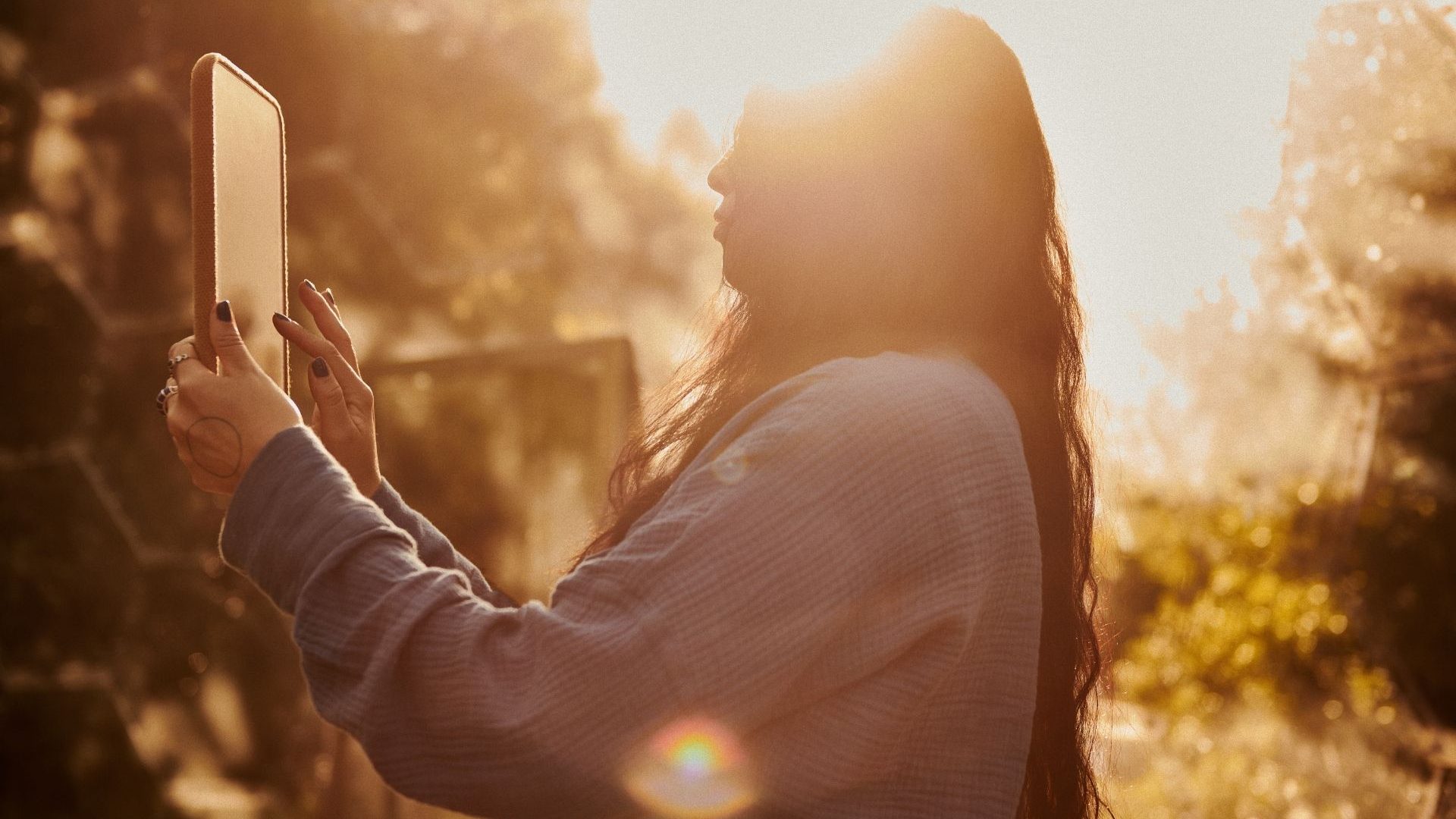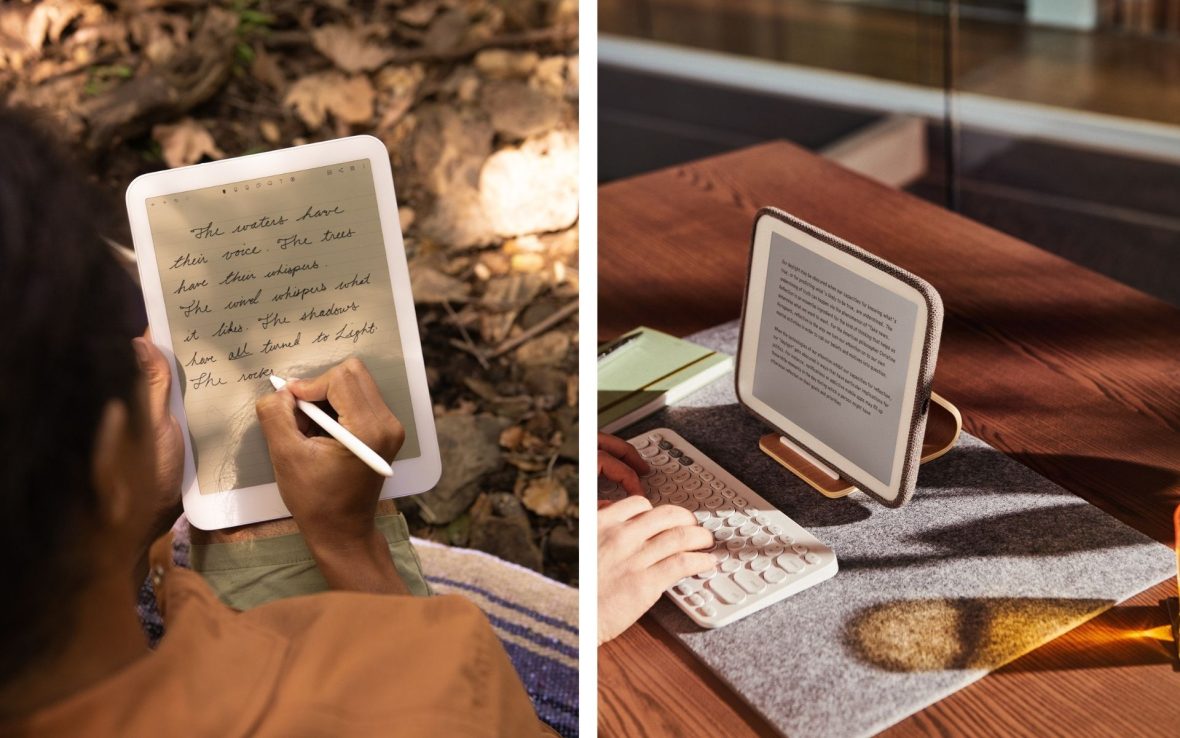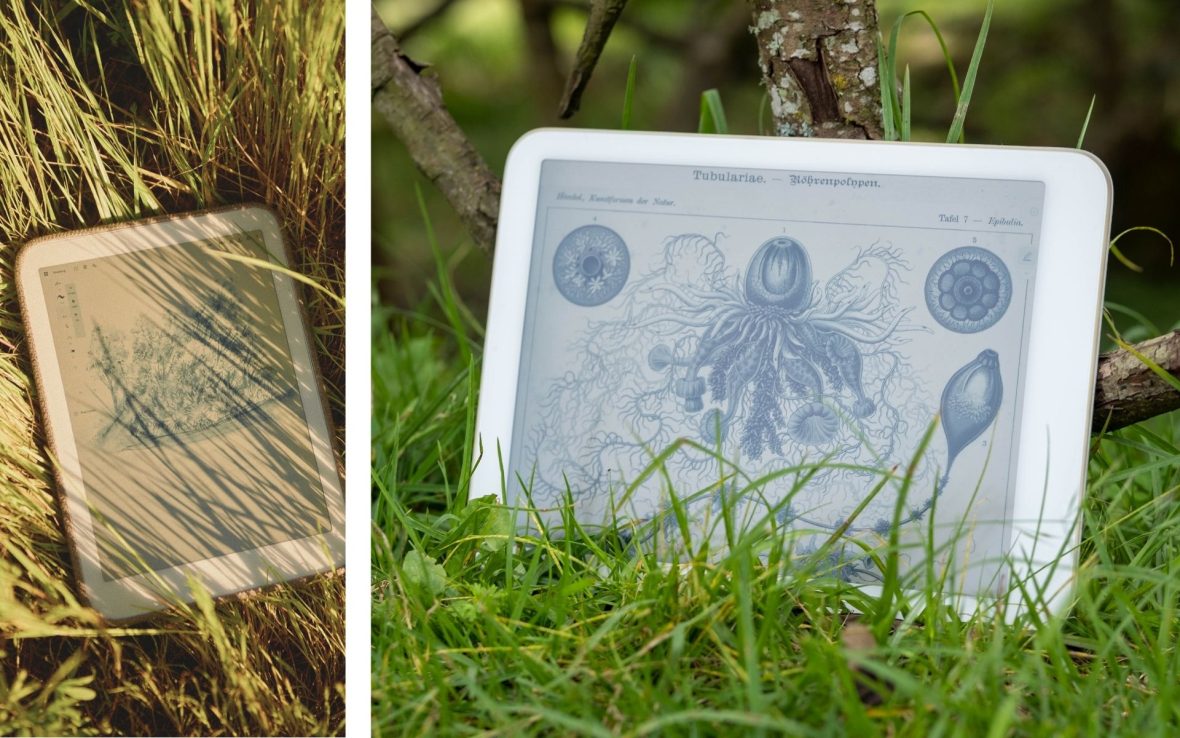
Seeking a gentler replacement for bluelight phones and laptops while on the road, Adventure.com gear writer Kassondra Cloos tries out the Daylight Computer—a black-and-white Android tablet.


Seeking a gentler replacement for bluelight phones and laptops while on the road, Adventure.com gear writer Kassondra Cloos tries out the Daylight Computer—a black-and-white Android tablet.
When I heard about the Daylight Computer, which is “designed for deep focus and wellbeing,” I wanted it immediately. It’s simple: It’s an Android tablet with a screen like an e-reader, and it advertises itself as something of an anti-computer.
Struggling to get off your screens, or to finish your work in an efficient manner? The Daylight DC-1 will help you solve those problems, the company claims. It’s “the world’s first human-friendly computer that your brain and eyes will actually love.”
What’s not to love about that?
Well, I’ve been testing it out for the last six months, and I’m still not sure how I feel about it. Its optional amber backlight is far friendlier on my eyes at night, and its e-reader screen is far easier to see on sunny days. But while it can do a lot, it can’t quite replace any one of my other devices, so I’ve ended up bringing more gadgets with me on trips rather than fewer screens.
Here’s what you need to know about the USD$729 Daylight DC-1.
It runs on Android 13, weighs 1.2 lbs (550 grams), has 128 gb of storage, and has speakers, a microphone, and a stylus that allows you to take notes as if writing on paper. It’s bluetooth-enabled, so you can connect headphones, a keyboard, and a mouse, but it does not have a front-facing camera—or any camera, for that matter. The battery can last for days on a single charge.
Its LivePaper display is black-and-white, and you can adjust its warm amber backlight (or turn it off) as needed. I find that the amber glow feels cozy at night, and helps relax me rather than keeping me awake.
Thanks in part to the Daylight, I was able to get into a habit of journaling by hand every morning before turning on my phone, which offered a far more relaxing start to my day. I was able to keep this up for about 40 days in a row before I traveled back to the US to visit family… but immediately went right back to my old habits after missing just one day.
Here’s where my feelings about the Daylight start to waffle. If you’re comparing it with an iPad or other Android tablet and looking for something to cut down your screen usage, I’d say this is a perfect replacement. But I don’t have an iPad or Android tablet, so I ended up adding a screen to my life rather than replacing one.
Because you can use it to send WhatsApp texts, create and edit documents via Word or Google Docs, and browse the web, the Daylight is more versatile than the reMarkable tablet (which I adore, even though it can’t support Kindle books) or a simple e-reader, which can’t browse the web. But it’s not quite as powerful as a laptop.
I have to admit I was hoping it could replace mine entirely when traveling—perhaps too tall of an order for someone who needs to work in WordPress, edit photos, and multitask in ways the Daylight was designed to prevent.

On the positive side, however, I’ve found that I sleep much better when I hide my phone in a drawer at night and use the Daylight instead to satisfy any late-night scrolling urges. Its “deliberately boring” black-and-white screen, as they refer to it, definitely stops you from going too far down any internet rabbit holes.
That’s obviously great for sleep, and for building better habits around screens in general. On a long stretch without travel earlier this year, I kept the Daylight and a paper notebook by my bed, and put my phone out of easy reach. I often reach for my phone in the middle of the night if I wake up and can’t fall back asleep, and I’m guilty of checking emails and texts before getting out of bed in the morning—a habit I’ve long wanted to change.
Finally, thanks in part to the Daylight, I was able to get into a habit of journaling by hand every morning before turning on my phone, which offered a far more relaxing start to my day. I was able to keep this up for about 40 days in a row before I traveled back to the US to visit family… but immediately went right back to my old habits after missing just one day. I hope to get back in that rhythm soon.
Here’s another area where the Daylight shines (and please forgive me that pun): When I’m typing on the Daylight–as I am now, using Google Docs, an Apple Magic Keyboard, and a Moft stand–I feel more present in my environment than absorbed in my screen. I’m sitting in one of my favorite cafes in London right now, the Tram Store, which is full of historic charm and hanging plants, and I feel much more present than I usually do. I like that.

The limitations of the Daylight mean that I reach for it far less often than I’d theoretically like to, considering how much better I do feel when I’ve chosen it over my laptop or phone. I wouldn’t say it has replaced any one of my other devices… But I also think I’ll miss it when I have to give it back (I’ve been borrowing a sample for this review).
Is it an absolute must-have? You’ll have to decide that for yourself.
If you’re looking to replace an iPad or other tablet with something a bit more mindful, I’d say yes–this will absolutely reduce your screentime and encourage mindful reading and/or writing versus watching, scrolling, and posting.
If you’re looking for a simpler device to replace your usual tech while traveling, however, that’s another story. In that case, I’d say don’t ditch your laptop just yet.
Adventure.com acknowledges that the most sustainable tablet is the one you already have—or not getting one at all. We strive to provide honest reviews of products that provide a more mindful or sustainable solution compared to other options.
***
Adventure.com strives to be a low-emissions travel publication. We are powered by, but editorially independent of, Intrepid Travel, the world’s largest travel B Corp, who help ensure Adventure.com maintains high standards of sustainability in our work and activities. You can visit our sustainability page or read our Contributor Impact Guidelines for more information.

Kassondra Cloos is a travel journalist from Rhode Island living in London, and Adventure.com's news and gear writer. Her work focuses on slow travel, urban outdoor spaces and human-powered adventure. She has written about kayaking across Scotland, dog sledding in Sweden and road tripping around Mexico. Her latest work appears in The Guardian, Backpacker and Outside, and she is currently section-hiking the 2,795-mile England Coast Path.








Can't find what you're looking for? Try using these tags: